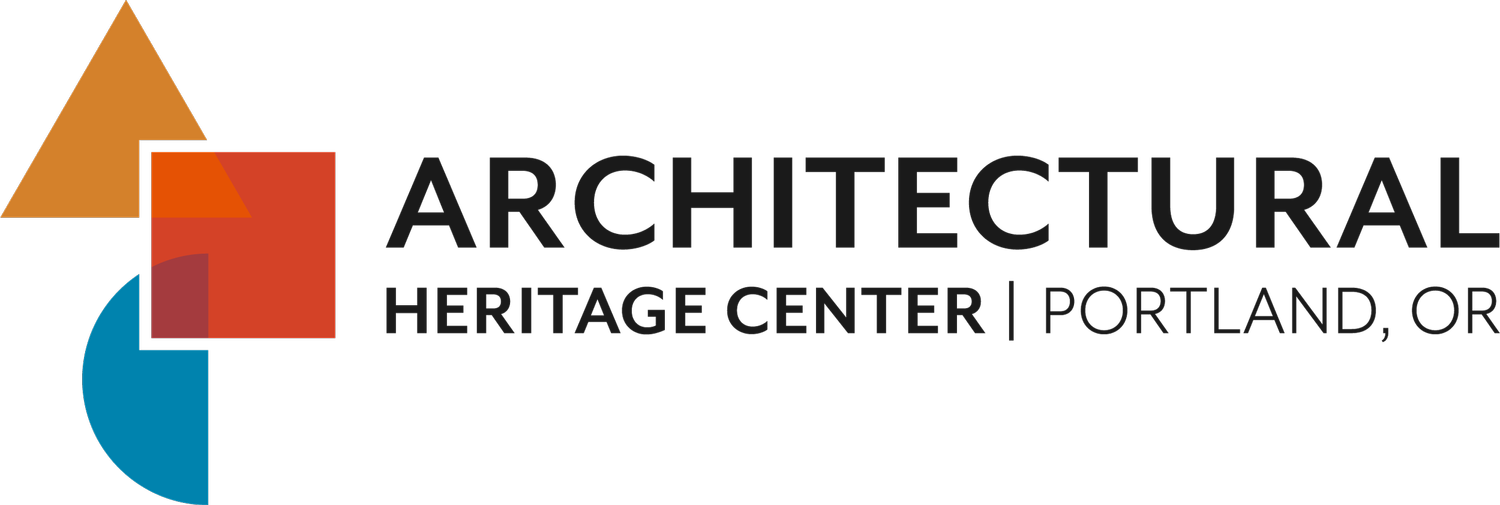2024 ARCHITECTURAL HERITAGE CENTER CANDIDATE SURVEY RESPONSES
Bob Weinstein Candidate for City Council in District 4
LIVABILITY: Stewardship of Portland’s built environment is a key quality of life issue. The preservation and reuse of existing buildings is an important component of sustainable development and helps to maintain strong, livable communities.
Q1
Agree: It's not just about buildings but places we cherish such as parks and open spaces that define our home.
ADAPTIVE REUSE: Do you think the conversion of empty or underused commercial buildings (e.g., offices or warehouses) into new uses can advance two important objectives:
a. alleviate Portland’s affordable housing shortage;
b. help to revitalize the city’s downtown.
Q2
Agree: The current city approach is too narrow and not necessarily feasible. The city policy must be more dynamic and look at all architecture topologies beyond but including the so-called missing middle.
SUSTAINABILITY & CLIMATE: Building reuse, instead of demolition and replacement, equates to taking thousands of cars off the road (EcoNorthwest Study). Promoting reuse should be an important component of achieving Portland’s sustainability goals.
Q3
Agree: Portland's current sustainability goals are half-baked and focus on "the new" and do not really look toward a more holistic approach of life cycle costing.
FINANCIAL INCENTIVES: To make building conversion and reuse economically feasible, many believe we need better financial tools, such as a state rehabilitation tax credit – a tool used by 39 other states. Would you support making that a priority on the City’s legislative agenda?
Q4
Yes: Add to that a seismic rehab credit and reinstate the special tax assessment policy.
DEVELOPMENT IMPACTS: We need more affordable housing. However, proposed zoning changes (e.g.significant increases to building height and scale) can incentivize demolition, displacement, gentrification, and erasure of cultural heritage. How concerned are you about these potential negative consequences?
Q5
Very concerned: The current city policy is myopic and does not take into consideration any context for new development or use of extant vacant hotels/motels. The bromide is not simply a fix by a "one-size fits all" zoning approach.
PLANNING KNOWLEDGE: How familiar are you with Portland’s Comprehensive Plan, zoning codes, land use regulations, and current policies for historic properties?
Q6
Somewhat familiar: My understanding is that in the last revision to the Historic Preservation codes in March, 2022, the protection of historic resources was diminished, so that the code now poses a significant compromise to protection. The city of Portland does not support historic preservation but rather sees it as a threat to development and "progress."
INFILL DEVELOPMENT: In Portland’s historic areas, it’s important that new infill construction fit with surrounding context and retain the districts’ unique qualities and identity.
Q7
Agree: The city has lagged far behind in updating or even creating historic design guidelines.
CONSERVATION OF PORTLAND “MAIN STREETS”: Portland’s unique identity is due in large part to its many distinct and diverse neighborhoods and “streetcar-era main streets.” Many were the original main street when these areas were separate cities before being annexed into the larger City of Portland. Recent rezoning, increased height limits and no historic protections make these areas vulnerable to demolition. Would you support the creation of mini-Conservation Districts (typically 1 or more blocks) to help retain these iconic commercial main street centers?
(For Reference: Conservation Districts have greater flexibility than Historic Districts given that they still allow for growth and change but can support more context-sensitive development. New Conservation Districts would have demolition review for contributing resources, objective design standards, and the height limit of the zone).
Q8
Yes: However, micro, macro, or mini, the policies for protection are not extant nor will they be in the current city/bureau culture, with its bent toward "build, baby, build" and the strong influence of the Seattle-based Sightline Institute.
TOURISM: Historic buildings and public spaces are a significant economic asset as a major attraction for tourism. What priority should this be given when planning and setting policy?
Q9
High: [No comment]
BONUS: Tell us your favorite building, neighborhood, or place in Portland.
Q10
RESPONSE: All historic buildings, especially in the Skidmore/Old Town neighborhoods.





